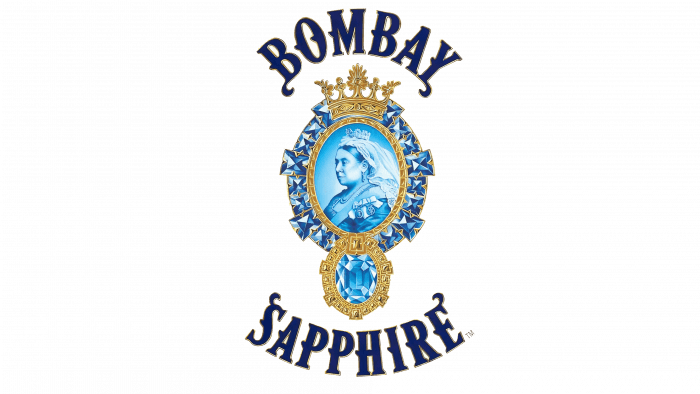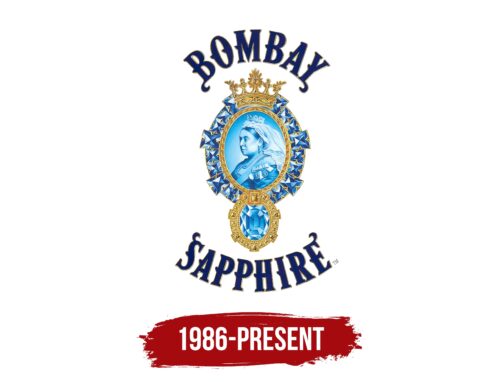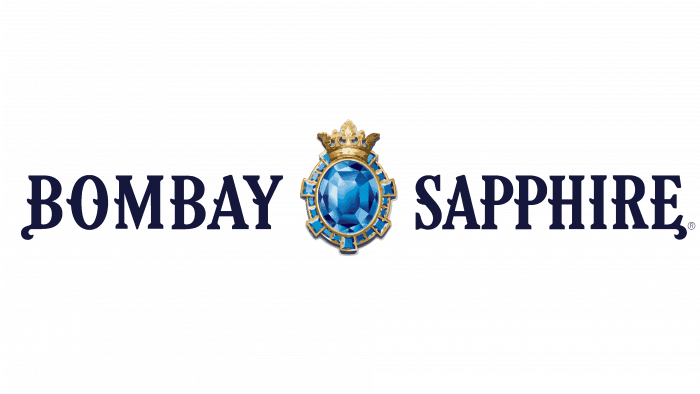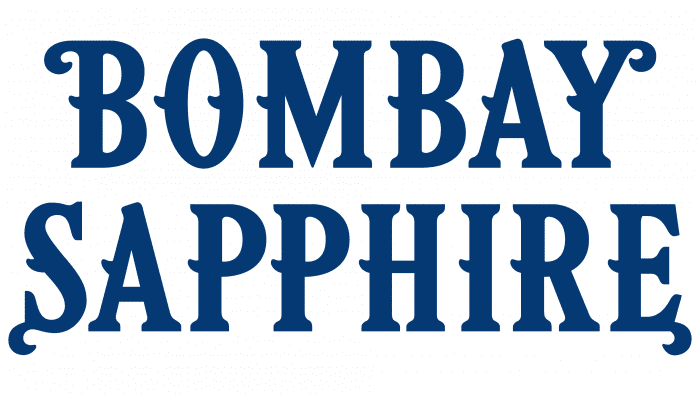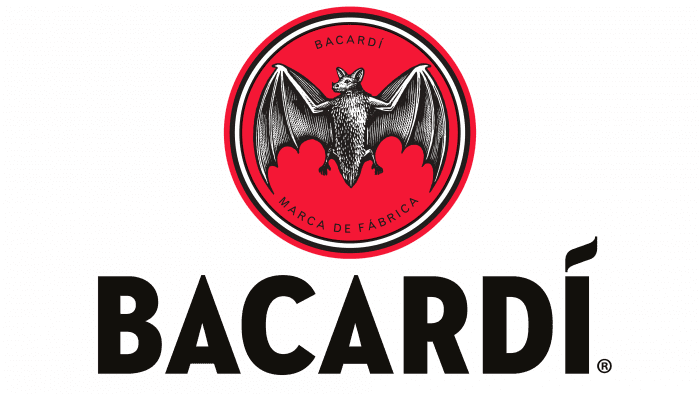The Bombay Sapphire logo says that the real gem is in the bottles. The queen herself served as an inspiration for the master. The sign symbolizes a unique recipe and unique taste, thanks to which the drink is worthy of the highest praise.
Bombay Sapphire: Brand overview
| Founded: | 1986 |
| Founder: | Bombay Spirits Co., Ltd. |
| Headquarters: | Laverstoke is a village,north west Hampshire, England. |
| Website: | bombaysapphire.com |
Meaning and History
The manufacturer is responsible for the bottle design. In 1960, his emblem depicted Queen Victoria and the year the unique recipe was created – 1761. This is a significant date: it was then that the distiller Thomas Dakin compiled a list of botanical plants for making the drink.
Since then, the emblem has changed significantly. It bears the name Bombay Sapphire, which was inspired by the 182-carat Star of Bombay diamond. It is logical that the brand name also has the shape of a gemstone. It looks like a piece of gold-edged jewelry with an artistic portrait of Queen Victoria. Above is the crown, a traditional symbol of royal power.
What is Bombay Sapphire?
It is a gin with a mild taste and a pleasant herbal aroma. It is produced in Great Britain according to an old recipe that was invented back in 1761. It is prepared from Scottish wheat alcohol in special distillation stills.
The Bombay Sapphire lettering complements the graphic. The letters are stylishly designed: they have not only serifs but also small protrusions in the middle. Moreover, “B,” “Y,” “S,” and “E” are adorned with elegant curls.
The logo immediately shows that jewels and royal coats of arms inspired the brand. The label features an oval-shaped piece of jewelry with expensive gold-cut stones. In shape, it resembles a double pendant or necklace. In the center is a portrait of Her Majesty Queen Victoria. Above her is a large golden crown. The combination of small rectangular sapphires surrounds everything. There is one large gem below. Its cut is similar to the gemstone setting above. The text portion is scattered at the top (Bombay) and below (Sapphire). It is in the form of arches with curls on the first and last letters.
Bombay Sapphire: Interesting Facts
Bombay Sapphire is a famous gin brand known for its aromatic botanicals and unique making process.
- Origin and Name: Launched in 1987, Bombay Sapphire’s name hints at gin’s popularity in British-ruled India, though the brand isn’t directly linked to Mumbai (formerly Bombay), India. The “Sapphire” part of the name comes from the Star of Bombay sapphire from Sri Lanka, adding an exotic touch to the brand.
- Blue Bottle: The brand’s bright blue bottle is easily recognizable and symbolizes the gin’s quality and uniqueness, inspired by the sapphire named after it.
- Making Process: Bombay Sapphire, unlike other gins, uses a vapor infusion process. Botanicals are placed in a basket, and the spirit’s vapors pass through them, capturing a lighter, aromatic flavor.
- Botanicals: Ten botanicals from around the world, like Italian juniper berries and Spanish lemon peel, make the gin balanced and versatile for cocktails.
- Laverstoke Mill Distillery: This distillery in Hampshire, England, combines modern and traditional methods and is known for its sustainable practices. It’s won architectural awards for its design, including for its glasshouses by Thomas Heatherwick.
- Cocktails: Bombay Sapphire is a go-to gin for classic cocktails like the Martini because of its balanced taste, making it versatile for various drinks.
- Support for the Arts: The brand supports art and design projects globally, reflecting its commitment to creativity in its packaging, distillery design, and marketing.
Bombay Sapphire is celebrated for its gin and history, innovative distillation, and art and cocktail culture contributions.
Font and Colors
Bombay Sapphire is a unique brand with its well-recognized eclectic style that attracts buyers and famous designers. They made the inscription on the logo with a typeface of their design, which is remotely close to IFC Los Banditos or Lost Saloon. All letters are uppercase, with serifs. There is another serif in the middle of the legs of each symbol. “B,” “Y,” “S,” and “E” look the same because they have identical curly elements.
The logo is dominated by shades of blue, blue, and gold. This palette corresponds to the brand’s “diamond” concept. It reflects the premium status of dry gin and harmoniously matches the bluish glass of the bottles.
FAQ
What is the meaning of the Bombay Sapphire logo?
The logo and blue bottle design pay tribute to the Star of Bombay, a famous 182-carat sapphire from Sri Lanka. This gemstone symbolizes luxury, quality, and elegance, which the brand aims to embody in its gin.
The name “Bombay” nods to the heritage and exotic origins of the British colonial era in India, adding historical richness and sophistication. “Sapphire” refers to the precious gemstone, emphasizing the premium nature of the product.
The blue bottle design is distinctive and easily recognizable, setting Bombay Sapphire apart from other gin brands. The color reflects the name and gives a visual impression of clarity and purity, aligning with the gin’s reputation for quality.
Initially produced under IDV (International Distillers & Vintners), the brand quickly gained a reputation for superior quality and unique packaging. Combining the iconic blue bottle and the association with the Star of Bombay has established the brand as a premium choice in the gin market.
Why is the Bombay Sapphire bottle blue?
The Bombay Sapphire bottle is blue to represent the blue tint of a sapphire, fitting the brand’s name and theme. This design choice connects to the Star of Bombay, a famous 182-carat sapphire symbolizing luxury and quality.
The blue-tinted translucent bottles were created to make the packaging stand out and convey elegance and premium quality. When the brand was launched in 1987, the distinctive blue bottle positioned the gin in the premium, top-shelf category. Its unique design immediately set it apart from other gins, attracting attention and signaling its high-end status. This design choice was key in establishing the brand as a premium gin from its launch.
How did Bombay Sapphire get its name?
The name “Bombay Sapphire” was chosen to reflect the historical connection between gin and India during the British colonial era. “Bombay” refers to Mumbai, an Indian city significant during British rule when gin became popular among the British.
“Sapphire” references the Star of Bombay, a famous 182-carat sapphire. This gemstone symbolizes luxury and quality, qualities the brand aims to embody.
Who is the lady on the Bombay bottle?
The lady on the Bombay Sapphire bottle is Queen Victoria. Her image serves as the brand’s emblem. Queen Victoria was the British monarch during the height of the British Empire, which included India. Her image connects the brand to its historical roots and the era when gin became popular in British colonial India.
Queen Victoria’s presence on the bottle adds an element of regal elegance and tradition, reinforcing the brand’s image of quality and luxury. Her likeness aligns with the sophisticated and premium positioning of Bombay Sapphire in the gin market.
Is Bombay Sapphire gin?
Yes, it is a gin made from ten botanicals. It is known for its unique flavor and high quality, achieved through careful ingredient selection and a special distillation process.
The ten botanicals in Bombay Sapphire are juniper berries, lemon peel, coriander, angelica root, orris root, grains of paradise, cubeb berries, cassia bark, almonds, and liquorice. These botanicals, sourced from around the world, give the gin its complex and balanced taste.
Bombay Sapphire is made using a vapor infusion process. This method places the botanicals in copper baskets, and alcohol vapor passes through them during distillation. This process extracts the delicate flavors and aromas, producing a smooth and aromatic gin.
This careful selection of botanicals and the unique distillation process set Bombay Sapphire apart from other gins. Its distinct flavor profile makes it versatile for cocktails, such as the classic gin and tonic or a martini.
